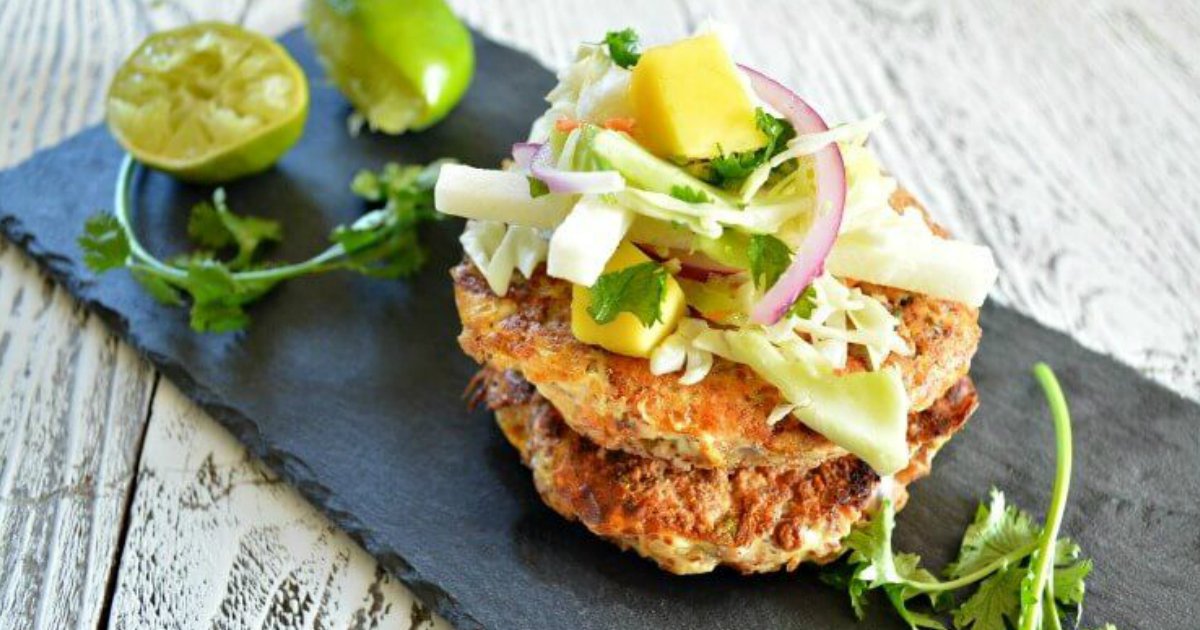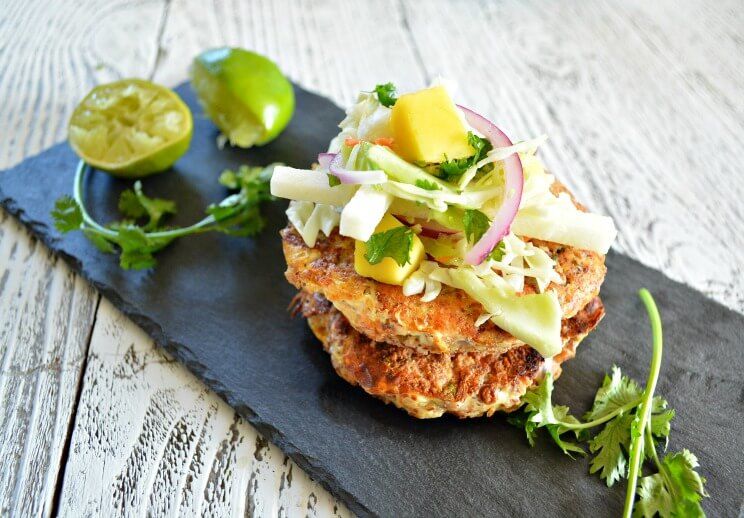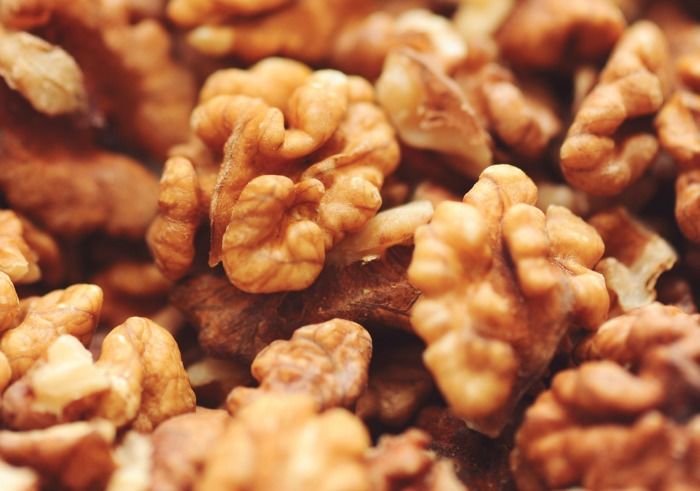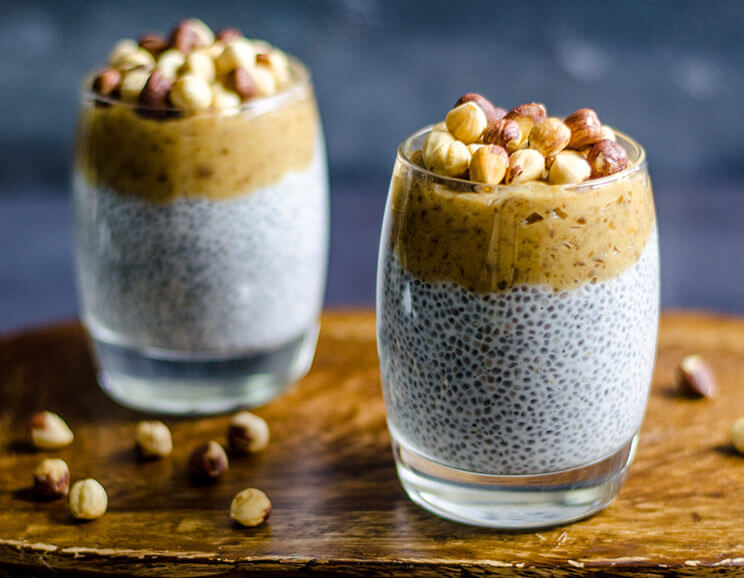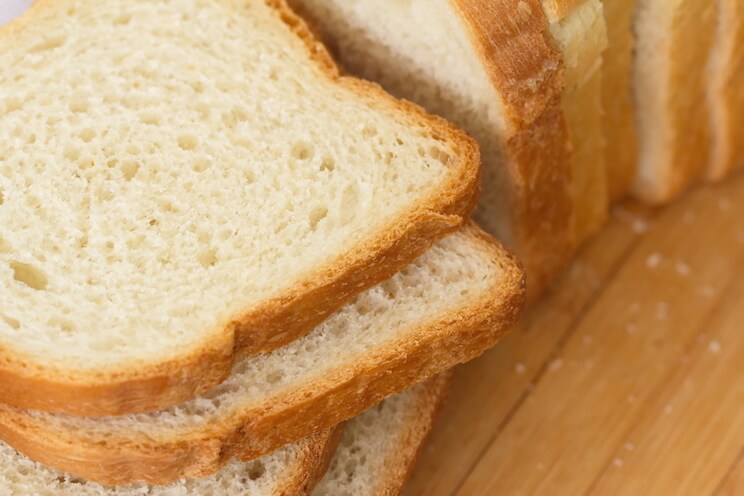Blood sugar is a relatively common concept for many Americans.
But for those who aren’t actively dealing with diabetes, it can be a bit of a murky subject.
Discovering more about blood sugar’s role in the body is key to your health, even if you aren’t currently diabetic.
What Is Blood Sugar?
Blood sugar, or glucose, is sugar carried through the bloodstream to provide energy to the body. Glucose increases when we eat – particularly foods that contain refined carbohydrates, vegetable oils, and sugar. Protein, but not fat, can be converted to glucose when needed, too.
Since organs function best with balance, the body tries to maintain stable blood sugar levels. This internal balance is referred to as homeostasis. When we eat carbohydrates, they are broken down into simple sugars during the digestion process. Glucose is the primary simple sugar that fuels the body. Blood sugar levels rise after eating, but then typically return to homeostatic levels within an hour. Blood sugar is at its lowest levels in the morning after fasting during the night.
After glucose is broken down during digestion, it needs to be received into the cells. Insulin is a hormone that allows glucose to enter the cells for energy. Without insulin, the cells would not be able to receive glucose.
Insulin releases when glucose is present. When blood sugar levels are high, like with diabetes, insulin can’t always keep up with glucose absorption. In other cases, the pancreas doesn’t produce enough insulin to keep up with demands, as is common with type 1, or autoimmune, diabetes.
Type 1 diabetes is often referred to as insulin-dependent diabetes because even when dietary glucose is limited, there is still not enough insulin to handle the glucose load. In other cases, typically with type 2 diabetes, the body becomes desensitized to the presence of insulin. This is known as insulin resistance. The pancreas produces more insulin, but it becomes harder for the insulin to stimulate the absorption of glucose.
Bottom line: Glucose is a simple sugar that is needed for cellular energy. Insulin allows glucose to be absorbed into cells and used for energy. In type 1 diabetes, the pancreas doesn’t produce enough insulin. In type 2 diabetes, the body becomes resistant to insulin’s actions.
How Your Diet Affects Blood Sugar Levels
Since all glucose in our bodies is derived from our diets, what we eat has a big impact on our blood sugar levels. How much glucose is produced and how our body responds to it is determined by a few key factors.
Genetics can be a primary factor in how the body responds to glucose and insulin. Certain populations can be at greater risk of diabetes. Dozens of other specific genetic mutations can increase the risk of type 1 or type 2 diabetes and the associated glucose and insulin problems. So, while some may claim that their genetics are at fault and diet has nothing to do with it, the management of genetic-induced diabetes still requires lifestyle modifications, which are highly effective.
If you eat a diet high in refined carbohydrates, vegetable oils, and sugar, then you’re most likely getting more glucose than your body needs for energy. When you consume excess glucose that insulin can’t take into your cells, it gets stored as fat. This is because your body can draw from your fat tissue when it needs extra energy. In cases of diabetes, however, this extra fat can lead to obesity, which further fuels the hormonal chaos that happens when insulin resistance becomes a chronic problem.
Bottom line: While genetics can play a role on how your body uses blood sugar, diet also influences levels since it’s the source of glucose. Insulin resistance or autoimmune diabetic issues can also influence how glucose gets used or stored.
How to Control Your Blood Sugar Levels
Eating a standard American diet and trying to regulate blood sugar levels can be a challenge. Much of the typical American diet is refined carbohydrates and sugar, and these processed foods cause blood sugar levels to spike dramatically.
The glycemic index was designed to help people who are diabetic manage their glucose. It takes 50 grams of any given carbohydrate-containing food and subtracts fiber grams (which are indigestible), leaving a number. Higher count glycemic index foods will spike glucose more than lower count ones.
The glycemic index was designed to help people who are diabetic manage their glucose.
But, trying to manage diabetes on the glycemic index alone can be difficult. Lifestyle and dietary modifications can be very successful, especially when a diet focuses on whole foods and ditches refined and processed carbs
While some who have type 2 diabetes may need to focus on low carb to reduce the glucose surge and to regain insulin sensitivity, not everyone with diabetes will need to cut carbs. High quality carbs, like those found in fruits and vegetables, are beneficial because they offer nutrients that can help reverse chronic conditions.
The best way to ensure that eating healthy carbs won’t spike glucose, is to choose carbs with higher fiber or to pair them with quality fats and proteins. This will slow down digestion, and create a more stable environment as insulin escorts digested glucose into the cells.
When it comes to blood sugar regulation, breakfast is the most important meal of the day. Starting the day off with a breakfast high in protein sets the tone for balanced blood sugar throughout the day. In general, aim for 20 grams of protein or higher.
When it comes to blood sugar regulation, breakfast is the most important meal of the day.
Bottom line: Controlling blood sugar is easier with a Paleo diet focusing on whole foods versus a traditional American diet filled with refined carbs and sugar. Quality protein and fat help balance carbohydrate intake, especially when part of a healthy breakfast.
6 Best Foods to Eat for Blood Sugar
While there are many foods that can be beneficial for blood sugar, there are certain ones that have a knack for helping to keep it nice and steady.
1. Cinnamon
Ceylon cinnamon can help control blood sugar and insulin levels by lowering them. Cinnamon is effective at balancing blood sugar because of the presence of antioxidants, which help improve hormonal communication and improve proper glucose storage and use.
While there are two kinds of cinnamon, Ceylon cinnamon is the one that has the best health benefits. Cassia cinnamon is most commonly found on grocery store shelves, so be sure to find one that is explicitly labelled “Ceylon.” Health food stores and online markets are usually the best source.
2. Salmon
Salmon reduces the markers increasing the risk of cardiovascular disease thanks to the presence of anti-inflammatory Omega-3 fatty acids. Blood sugar problems can spark inflammation within the body, but they can also develop due to the presence of inflammatory foods, like those that are rich in Omega-6 fatty acids or trans fats. Omega 3’s, like those found in salmon, work to counterbalance the inflammatory problems and restore normal glucose usage in the body.
Salmon is rich in protein and healthy fats, so it won’t spike blood sugar. While some may struggle to eat it, especially if they’re not “fish people,” recipes like this Salmon Burger with Mango Slaw are a good way to introduce fish to your diet without being overwhelmed with that fishy taste.
3. Eggs
Rich in protein and healthy fat, eggs are a quick and easy food that makes a good meal or snack. They promote fullness and have a stabilizing effect on blood sugar. They also promote the good kind of cholesterol, which defends against inflammation and chronic health problems. Eggs are rich in folate, B12, selenium, and a host of other nutrients that promote stable blood sugar thanks to a balance between protein and fat.
One of the best (and tastiest) ways to add eggs into your diet is to eat them with avocado, like in these Guacamole Deviled Eggs. Avocado and eggs share similar nutrient profiles, and increase satiety, which promotes balanced blood sugar long after you’ve finished eating.
4. Walnuts
While most tree nuts can be beneficial for diabetes, blood sugar, and overall health thanks to their protein – walnuts have some extra benefits.
Walnuts promote healthy insulin levels and weight loss thanks to their high levels of polyunsaturated fatty acids. These PUFAs, as they’re referred to, can help decrease fasting insulin levels by improving hormone communication and glucose usage. Walnuts are also rich in B vitamins, which nourish the nervous system and promote a balanced mood, as well as minerals like zinc, manganese, magnesium, and phosphorous.
Walnuts have a distinctly nutty taste and may not be the preferred snacking nut, but you can work them into your diet painlessly by adding them to a delicious chicken salad.
5. Apple Cider Vinegar
Drinking apple cider vinegar before meals can improve the body’s ability to take glucose into the cells by increasing muscular blood flow, reducing insulin resistance.
Drinking ACV before bed can also improve the next morning’s fasting glucose thanks to better blood flow to muscles, which can be dramatic for anyone battling type 1 or type 2 diabetes.
To work apple cider vinegar into your meals, try this Sweet Apple Basil slaw paired with some salmon or a grass-fed burger. You can also boost your dietary probiotics by making your own sauerkraut, which can naturally help to lower blood sugar.
6. Chia Seeds
Chia seeds are high in fiber and low in the carbs that raise glucose, making them a perfect blood sugar friendly food. They also contain almost six grams of protein in a single ounce. (31) Chia seeds are an abundant source of calcium, potassium, phosphorous, and natural antioxidants.
Chia seeds can help address insulin resistance by improving hormone communication and helping the body better regulate blood sugar and insulin levels. This makes them an ideal food for the prevention and reversal of this hormone problem.
If you want a blood sugar friendly dessert that isn’t too high in carbs, try this Chocolate Strawberry Smoothie.
3 Worst Foods for Blood Sugar
While adding specific foods to your diet can benefit your blood sugar, you’ll also want to cut the worst offenders that can spike glucose and stimulate insulin resistance.
1. Excess Sugar
Added sugars might be the most obvious culprit here for increasing blood sugar, but what most people might not realize is that even Paleo sweeteners like honey and maple syrup can contribute to the problem. Sodas and high-fructose foods are other major contributors to insulin resistance.
Following a Paleo diet that is low in processed foods and which focuses on meats, vegetables, fruits, fats, nuts, and seeds, will result in a natural avoidance of added sweeteners. Those who are trying to balance glucose or reverse insulin resistance will want to strictly limit or avoid baked goods, even Paleo ones, that add sweeteners and use higher-starch flours like cassava.
2. Grains
Grains aren’t Paleo because of the phytates and lectins that they contain, otherwise known as anti-nutrients, that can cause digestive upset or contribute to health problems, Whether it’s white rice, quick oats, or refined wheat, grains are more likely to spike blood sugar than the carbs in vegetables or nuts. This is partially because grains don’t have much protein or fat to slow the digestion of glucose.
3. Foods Fried in Hydrogenated Oils or Trans Fats
Whether it’s fast food, French fries or anything fried in hydrogenated oils or trans fats, these foods increase inflammatory markers, mess up the good bacteria balance in the gut, and increase fat tissue, while altering the way that the liver and other detox organs work. Trans fats also alter the way that insulin works in the body, leading to further problems.
4 Lifestyle Factors to Keep Blood Sugar Stable
Diet is crucial for healthy blood sugar levels, but there are several non-f00d factors that can have a dramatic impact on blood sugar balance and insulin sensitivity.
1. Exercise
This is a most obvious answer, but still, 80 percent of American adults don’t get the recommended amounts of exercise or movement. Exercise might be helpful in altering blood sugar levels, making it especially beneficial for those dealing with high glucose.
Walking is always a good form of exercise given that almost anyone can do it, and it can be done for short or long amount of time. Regular exercise is more important than the specific type, and it can reduce the likelihood of diabetes in high-risk people as well as help to address it as an existing condition.
Yoga can also be effective in reducing fasting and postprandial glucose levels, resulting in better use of glucose as well as a healthy redistribution of fat. Whether you’re a yoga pro or not, it can be an enjoyable and relaxing form of exercise, and you don’t have to be incredibly flexible to begin. Whether you join a studio class or try yoga at home from a smartphone app, it’s a great beginning or end of day routine.
2. Get Vitamin D
Vitamin D is a nutrient that is difficult to get entirely from diet alone. While it is found in some food sources naturally, like cod liver oil, most food sources are artificially supplemented with extra vitamin D. Even so, dietary intake can often still leave a deficiency or low levels, and a combination of dietary intervention, sunlight, and supplementation is often required.
When vitamin D levels are low, the risk for insulin resistance and type 1 or 2 diabetes is higher. In fact, optimizing a child’s vitamin D levels can reduce the risk of developing type 1 diabetes.
The Vitamin D Council advises supplementation in most cases to meet the recommended daily amounts, ranging from 1,000 IU for infants to 5,000 IU daily for adults. Vitamin D3 is the superior supplemental form versus the less active D2. Levels should be monitored by a practitioner to ensure optimal supplementation and health benefits.
3. Manage Stress
Another factor that can influence blood sugar levels is stress. In order to maximize efforts to balance blood sugar, finding healthy ways to reduce and manage stress levels shouldn’t be overlooked.
Whether it’s engaging in a regular form of exercise, cutting sugar entirely, practicing meditation, or finding an enjoyable hobby, there are plenty of healthy ways to combat the negative effects of stress.
4. Prioritize Sleep
Almost everywhere you turn, you’re going to run into the advice that sleep needs to be important and you need to get enough if you want to be healthy. Not getting enough sleep can disrupt blood sugar, increase the risk of insulin sensitivity and poor hormone communication, produce more stress, and lead to chronic health conditions.
In a culture that thrives on busyness, it can be easy to rob from the sleep department to get other things done. But consistently cutting short sleep, even by an hour, can lead to other health issues that can stack up over months and years.
The Bottom line
When it comes to blood sugar health, there’s much more to it than just correcting diet alone. Eating the right foods is important, as well as avoiding problem foods, but lifestyle factors can also have a significant impact on the body’s ability to regulate blood sugar properly and function optimally.


